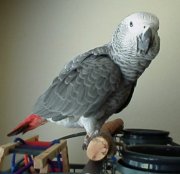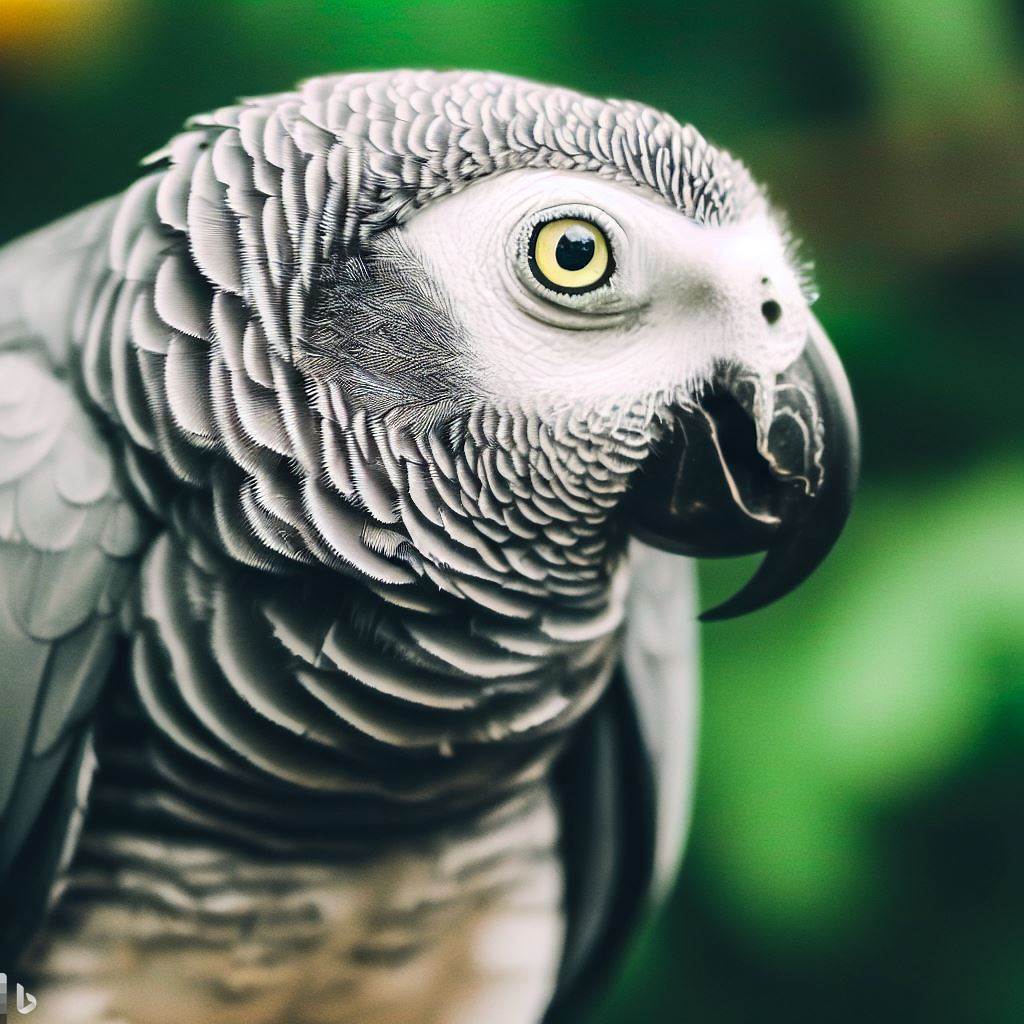
A maturing bird needs to express his autonomy. Within the core framework of “up”, “down”, no roaming and no biting, allow a Grey freedom in all safe ways. I feel it is important to concentrate at this time on the “core” behaviors. Areas outside of the core behaviors should be reserved for the bird, allowing him to make choices and decisions regarding his interaction or behavior.
Maturing birds should be given choices. If a maturing Grey is disciplined or corrected too much during this phase, he will resent it deeply. Some Greys become pluckers and biters at this stage, so understanding and proper actions are all important. Future problems can arise if a bird is forced into intimacy over which he has no control, if he is over-corrected and dominated at a time when he must separate emotionally, if he is not allowed autonomy or if he is not allowed to become an adult.
All of the core behaviors should be enforced with patience, gentleness, persistence, consideration and, most important, an unemotional response to rebellion.
Practice avoidance of bad or unwanted behavior when a bird is maturing. Laddering, punishment and isolation do not teach the bird anything except that he is a subservient being. This is not the way to establish a continuing relationship of trust and love with a maturing Grey.
I have not found that dominance and dominance-related issues play a significant role in the human/Grey relationship. Because of their sensitivity and intelligence, Greys need respect – not dominance by their human companions.
A Grey is a bird with many of his ancient instincts intact. Confusion, anxiety and resentment can occur when too many of these instincts are stifled. Domesticated animals with centuries and eons of association with humans behind them are much better prepared to deal with human dominance. A bird is not. He is, first and foremost, a wild animal. He is, for the most part, unknowable. His inner self is as hidden to us as the hearts of our fellow humans.
Your relationship with the bird will change – there is no doubt about it. He will be less accepting of scritches and long sessions on your chest. He will let you know when he wants these things. Most often this occurs at the end of the day – before bedtime. Don’t force yourself on the bird. Establish an early understanding of the question “Do you want scratched?” Inquire of the maturing Grey before extended petting and quiet time – allow him to acquiesce or refuse. Empowerment makes a Grey strong emotionally and confident in himself and in humans who make this empowerment possible.
A Grey who has control over his life in the non-safety related areas is a bird who will remain willing to interact with humans. It would be wonderful if our Greys stayed the sweet compliant babies they are in the beginning, but this cannot be. We can have a satisfactory and fulfilling adult relationship, similar to the warm and satisfying relationship we have with our adult children. We can never forget the babyhood and the childhood and regret their passing, but baby humans and baby birds grow up. They become their own persons with their own likes and dislikes. It is up to us to accommodate adulthood – the bird cannot and will not return to babyhood.
Greys need freedom to make some of the decisions that affect their lives and their persons. This freedom for birds, like independence and self-reliance in humans, makes them confident and self assured. A Grey will be better able to meet change and challenge if he has the experience and the knowledge that he is able to successfully manage some aspects of his life.
I’m an advocate of a gentle and understanding approach to maturity. Allow your bird the freedom to grow and develop within a wide but firm framework of boundaries.
It is important to avoid confrontation, any physical or aggressive action and excessive correction. Distraction and avoidance are the best approaches to use with the maturing Grey.
The rebellious periods can vary with the individual bird. There is a minor testing period that occurs at around six months of age. This may be the age in the ancient past when complete food independence occurred and a baby bird was no longer dependent on the parents for life and food.
In the wild, flocks of juveniles go through certain maturing activities. These include perfecting their flying skills, aerial playing and chasing, forming early bonds with non-family members, establishing their status on the playgrounds of Africa and withdrawal from the parental group. For the pet Grey, this period of time may form the basis for what we, at around 18 months of age, call the “terrible twos”. Our companion Greys don’t have the opportunity to do what their age-old instincts may call for them to do. Instead we will be observing substitute behaviors.
Activity and freedom will allow a Grey to develop in important ways. The independence-expressing stage is a risky stage. Understand and accept that it will come and it will go – in its own time and in its own manner.

